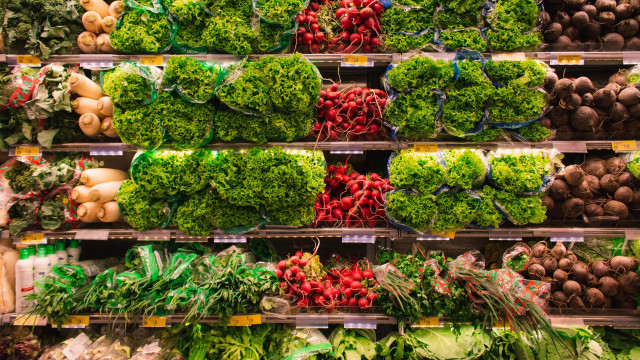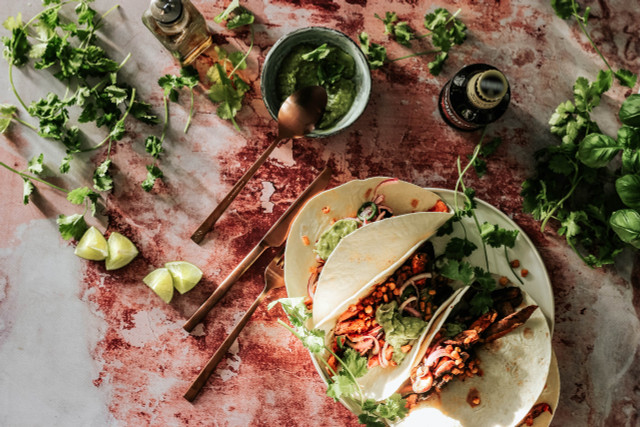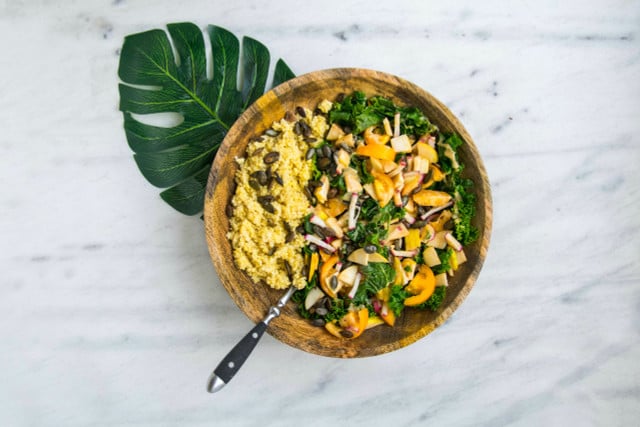Parsley vs. cilantro: what’s the difference? Although these tasty, leafy herbs might look similar, their flavor profiles and uses are very different. Here’s everything you need to know.
You want to learn how to tell the difference between parsley and cilantro? It’s easy! Let us show you everything you need to know about these two kitchen favorites, including how to use them and a comparison of their health benefits.
Parsley vs. Cilantro: How to Tell the Difference

When you’re in a rush, and especially if the produce is unlabeled, it’s easy to mix up cilantro and parsley. In fact, cilantro is sometimes referred to as Chinese parsley. But even though these herbs look similar superficially, there’s a couple of simple ways to tell them apart. Here’s the lowdown on parsley vs. cilantro.
- The best way to tell the difference between parsley vs. cilantro is to look at the shape of the leaves. Here’s an easy-to-remember rule for you: cilantro has curved leaves and parsley has pointed leaves.
- If you’re able to get close enough to smell the herbs in question, the difference between cilantro and parsley becomes quite clear. Parsley’s scent is fresh, green, and grassy, whereas cilantro is more fruity, a little like lemons. Some people even find cilantro reminiscent of dish soap!
There’s actually a good explanation for cilantro’s infamous ‘soapy’ scent and flavor. If you’re one of the many people who just can’t enjoy fresh cilantro without thinking of cleaning products, you’re not crazy – it’s genetic! Sensitivity to the chemical compounds called aldehydes present in cilantro – and many detergents – is determined to a certain extent by our genes. However, for all of you who do love this Tex-Mex and Thai food staple, read on for some tips on how to use and store cilantro.
Tips for Cooking with Cilantro



Cilantro (not parsley!) has a bold, citrus flavor that pairs perfectly with chili, lime, and many other elements of Mexican or Asian food. However, these flavor notes will evaporate quickly, so only add cilantro to your food just before serving. To prepare chopped cilantro (or parsley) properly, you should wash it thoroughly, dry it carefully, and chop it quickly but gently with a sharp knife. Crushing these delicate herbs’ leaves will leave most of their flavor on your chopping board.
When it comes to fresh cilantro, the sooner you eat it the better. If you place the freshly chopped stems in a container with a little cold water and cover the leaves with a plastic bag to retain moisture, cilantro will keep for a few days. The same is true of most other fresh leafy herbs, including parsley. Find out more about this Mediterranean and Middle Eastern mainstay below!
Parsley: Fresh, Nutritious, and Healthy



Parsley’s fresh, mild taste means that it is popular in a huge number of different cultures and cuisines. It is particularly common in French and Italian cooking, as it lessens the pungency of fresh garlic. (A handful of parsley will even help you get rid of garlic breath.) You will find that it’s called for in great quantities in many recipes from the Middle East, such as falafel or bulgur wheat.
Parsley also has numerous health benefits, many of which it shares with cilantro. Both parsley and cilantro contain high levels of vitamin A and vitamin C; antioxidants which are good for your eyes, bone strength, and immune system. Furthermore, cilantro and parsley are effective in regulating blood sugar levels. And parsley, if eaten in sufficient quantities, is an outstanding source of iron, which is especially important for maintaining a balanced vegan diet.
Parsley is even a natural, gentle disinfectant. For this reason, you can actually use parsley as a home remedy for earaches, among other things. However, you’ll probably enjoy it – and cilantro – most as a garnish for your favorite recipes. ¡Buen provecho!
** Links to retailers marked with ** or underlined orange are partially partner links: If you buy here, you actively support Utopia.org, because we will receive a small part of the sales proceeds. More info.Do you like this post?






